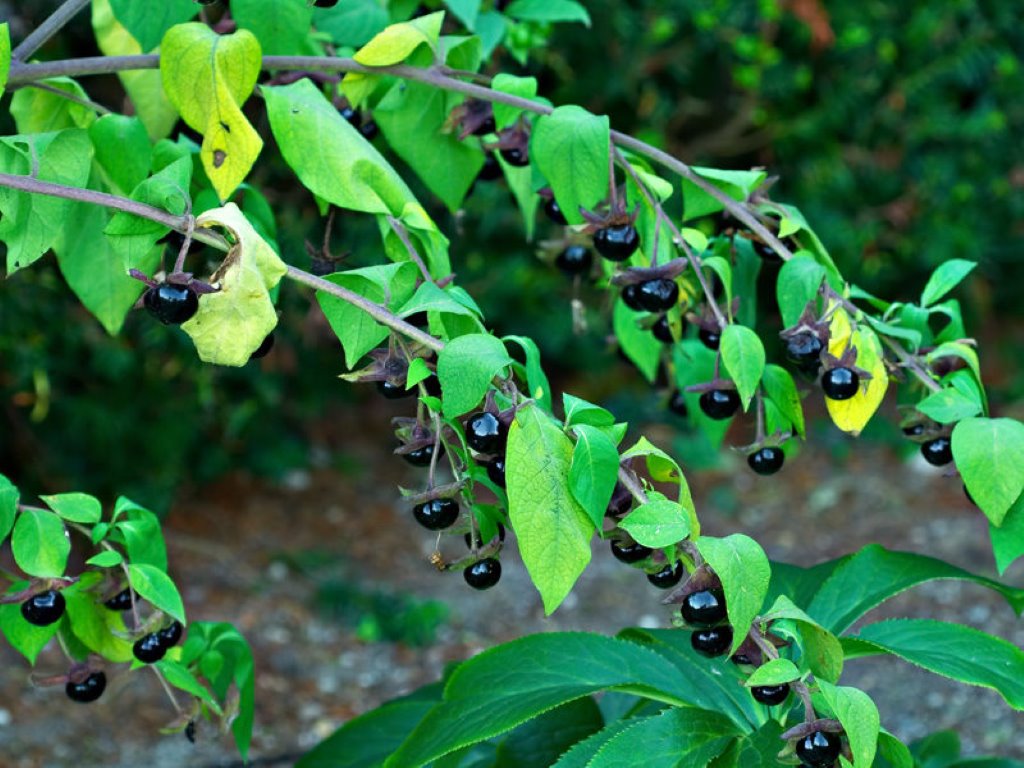Plants don’t hiss, chase, or bare teeth, which is why people tend to underestimate them. Yet some of the most efficient poisons ever encountered by humans come not from animals or laboratories, but from leaves, seeds, roots, and sap. Long before chemistry had names for toxins, people were already learning—often fatally—that certain plants could shut down the heart, destroy the nervous system, or slowly poison the body beyond recovery.
History is filled with quiet plant-related deaths. Socrates drank poison hemlock as an execution method sanctioned by the state. Entire frontier families were wiped out by contaminated milk from cows that grazed on toxic plants. Children mistook glossy berries for food, gardeners handled sap without knowing what it could do, and travelers sheltered under the wrong tree at the wrong time. These weren’t freak accidents; they were the result of plants doing exactly what evolution designed them to do—defend themselves.
Unlike venomous animals, poisonous plants don’t rely on speed or aggression. Their weapons are chemical, patient, and often invisible. Some kill quickly, others take days. Some work through ingestion, others through skin contact, smoke, or even secondary exposure through food. What makes them especially dangerous is familiarity. Many of the world’s deadliest plants grow close to where people live, are cultivated intentionally for beauty, or resemble harmless species closely enough to fool even experienced eyes.
This list explores twelve plants whose toxicity places them among the most dangerous on Earth. Each one has earned its reputation through documented poisonings, historical use, or well-understood biological mechanisms. These are not myths or exaggerated legends—they are living organisms whose chemistry has proven, time and again, that nature does not need claws to be lethal.
12. Jimsonweed (also known as Devil’s Weed)
Jimsonweed is a highly adaptable plant that grows widely across the United States, Canada, and parts of the Caribbean. It is often found along roadsides, abandoned lots, and open fields, blending easily into the landscape. Despite its unassuming appearance, the plant is loaded with toxic compounds, most heavily concentrated in its leaves and seeds.
The danger of jimsonweed lies partly in its unpredictable chemistry. The concentration of toxins can vary dramatically depending on the plant’s age, soil conditions, and climate. Some individuals have sought out the plant for its hallucinogenic properties, attempting to consume its roots or extract its juices. This practice is extremely risky. Even small miscalculations can lead to overdose, resulting in severe poisoning or death.
Symptoms of jimsonweed poisoning often include confusion, intense hallucinations, rapid heartbeat, overheating, and loss of consciousness. In many cases, users underestimate the potency of the plant and consume far more than their bodies can tolerate.
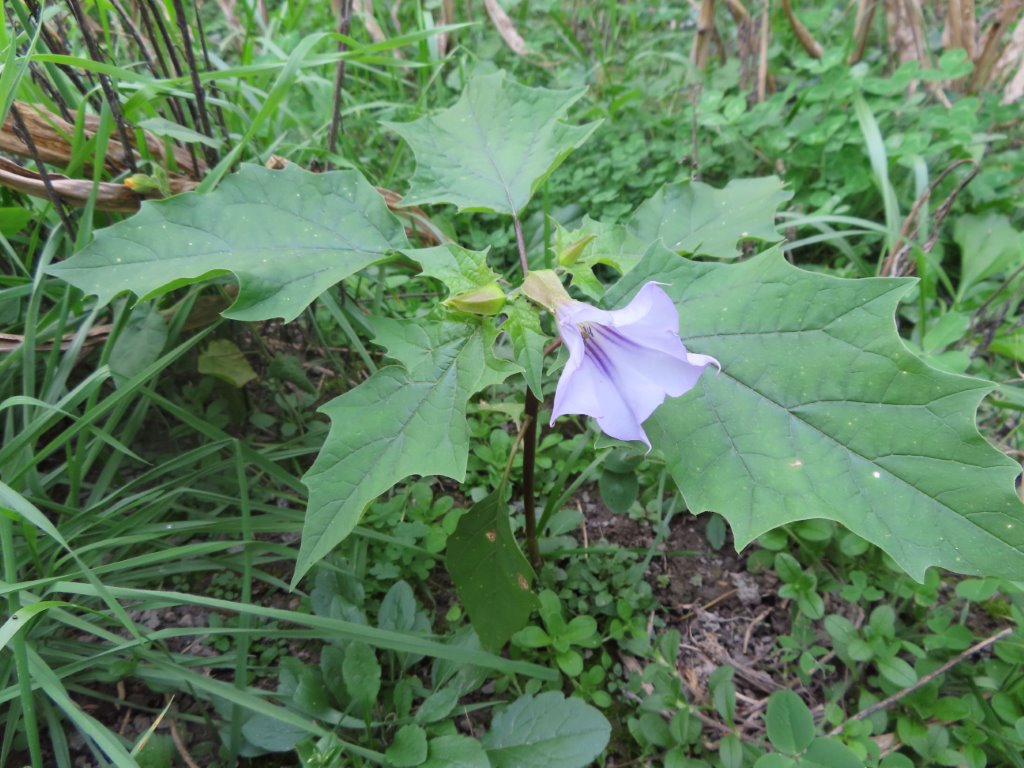
Jimsonweed, Datura stramonium, shown growing in the wild. While sometimes sought after for its hallucinogenic effects, its leaves and seeds contain unpredictable and potentially fatal toxins.
11. Atropa Belladonna (commonly called Deadly Nightshade)
Deadly nightshade is among the most toxic plants native to the Eastern Hemisphere. Its danger is absolute: nearly every part of the plant is poisonous. Both the leaves and the glossy black berries contain compounds that interfere with the nervous system, often with rapid and severe consequences.
Ingesting belladonna can cause an alarming range of symptoms. Victims may experience dilated pupils, sensitivity to light, blurred vision, loss of coordination, and severe dryness of the mouth. As poisoning progresses, neurological effects become more pronounced, including confusion, hallucinations, delirium, convulsions, and potentially coma.
The berries are especially dangerous to children. Their dark, shiny appearance and mildly sweet taste make them deceptively appealing. For adults, consuming as few as five to ten berries can be fatal. Even more alarming, a single leaf has been known to deliver a lethal dose under the right conditions.
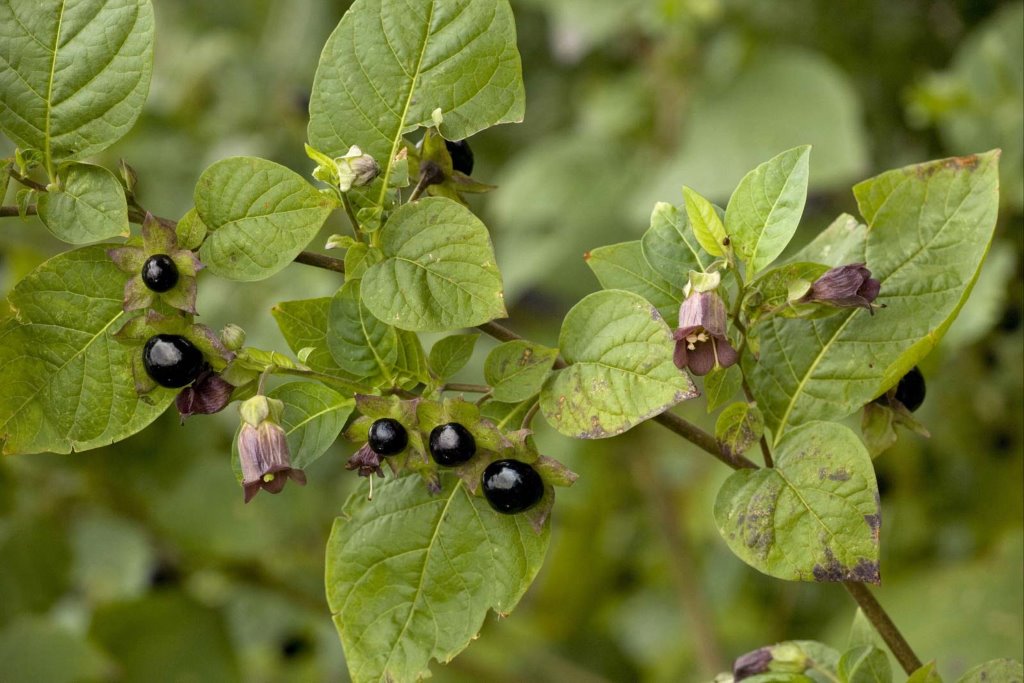
Atropa belladonna in fruit, showing the dark berries that have caused countless accidental poisonings. Despite their attractive appearance, even small amounts can be deadly.
10. Aconite (also called Wolfsbane)
Aconite is a perennial plant belonging to the buttercup family and is commonly found in mountainous regions across the northern hemisphere. It has a long and dark history tied to warfare, hunting, and assassination. The plant contains large quantities of an alkaloid known as pseudaconitine, one of the most potent plant-based poisons known.
Historically, the Ainu people of Japan used aconite to poison the tips of hunting arrows. Centuries later, its lethal properties were exploited again when it was reportedly used to enhance the deadliness of ammunition during World War II. The poison acts quickly and efficiently on the human body.
In cases of ingestion, victims often experience intense burning sensations in the limbs and abdomen. As the toxin spreads, it disrupts heart rhythm and nervous system function. Ingesting as little as 20 milliliters of aconite extract can result in death within two hours.
Beyond its real-world danger, wolfsbane has earned a place in mythology and popular culture. It is often depicted as a substance capable of repelling or transforming werewolves, reinforcing its long-standing association with fear and death.
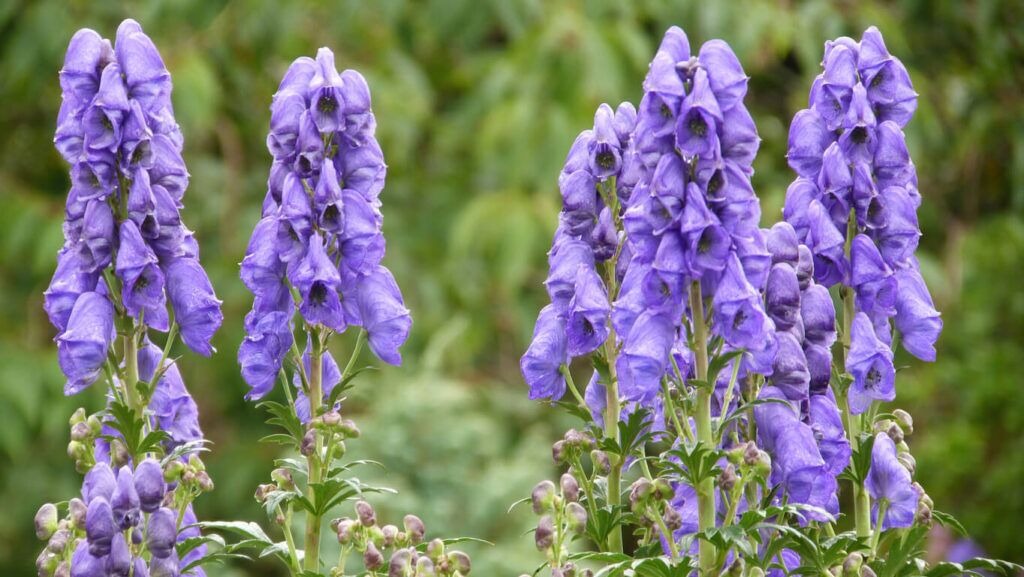
Image of aconite (wolfsbane), Aconitum napellus, a plant historically used as a poison in hunting and warfare, known for its rapid and often fatal effects.
9. Ageratina Altissima (better known as White Snakeroot)
White snakeroot is a deceptively ordinary-looking plant that grows throughout much of North America. Despite its historical use as a folk remedy for snake bites, ingesting this plant is extremely dangerous. It contains a toxin called tremetol, which interferes with metabolism and nervous system function.
Initial symptoms of poisoning include vomiting, excessive thirst, weakness, and delirium. What makes white snakeroot particularly insidious is its indirect lethality. Livestock that graze on the plant can accumulate tremetol in their bodies. Humans who then consume the milk or meat of these animals can become poisoned without ever touching the plant itself.
This phenomenon, known as milk sickness, killed thousands of European settlers in the early nineteenth century. Among its most notable victims was Nancy Hanks, the mother of Abraham Lincoln. At the time, the cause of the illness was poorly understood, allowing it to spread unchecked through farming communities.
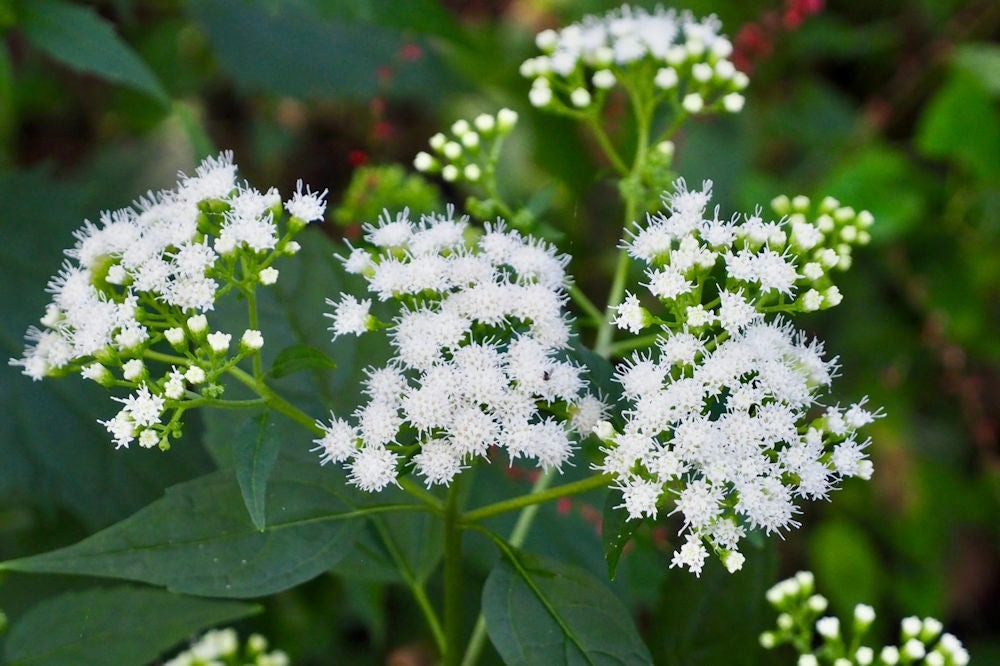
White snakeroot, Ageratina altissima, a plant responsible for historical outbreaks of milk sickness through contaminated dairy and meat.
8. English Yew
The English yew is a small to medium-sized tree native to Europe, North Africa, and parts of Southwest Asia. Its bright red berries appear inviting, but appearances are dangerously misleading. While birds can safely consume the fleshy outer portion, the seeds inside are highly toxic to humans.
Ingesting even a modest amount of yew can be fatal. Consuming approximately 50 grams of plant material is often enough to cause death. Poisoning symptoms include difficulty breathing, muscle tremors, convulsions, collapse, and sudden cardiac arrest. In severe cases, death can occur so rapidly that warning signs barely have time to appear.
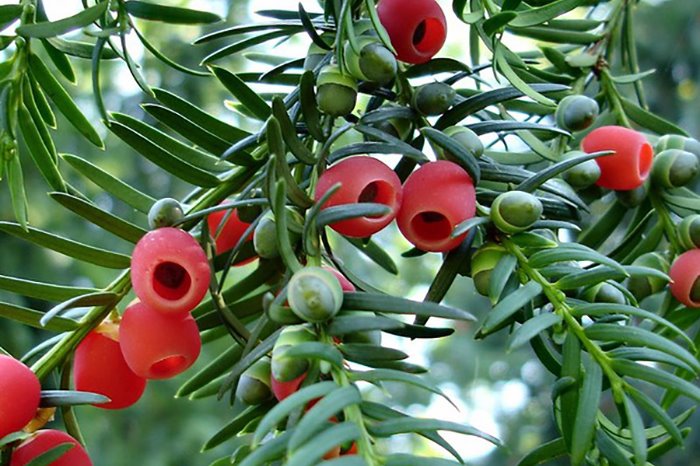
English yew tree, Taxus baccata, showing the red berries that conceal highly poisonous seeds lethal to humans.
7. Cerbera Odollam (often called the Suicide Tree)
Cerbera odollam is a medium-sized tropical tree native to South and Southeast Asia, particularly common along coastal regions and riverbanks. Locals sometimes refer to it as the pong-pong tree because of the hollow sound its fruit makes when it hits the ground. The fruit itself resembles a small mango, with green or orange skin that gives no hint of what lies inside.
Hidden within the fibrous husk is a kernel containing extremely powerful toxins, primarily the cardiac glycosides cerberin, along with compounds closely related to strychnine and brucine. These substances interfere directly with heart function. Ingesting as little as 30 milligrams of the active toxin can be enough to kill a healthy adult. Death is often preceded by violent convulsions caused by overstimulation of the nervous system and spinal sensory ganglia.
The plant earned its grim nickname after investigators in Kerala, India, linked it to more than 500 poisoning deaths. Many of those cases were suicides, largely because the tree is widespread, easily accessible, and its lethality is widely known in the region. Victims often remove the kernel, grind it with sugar, and ingest it as a deceptively sweet but fatal mixture.
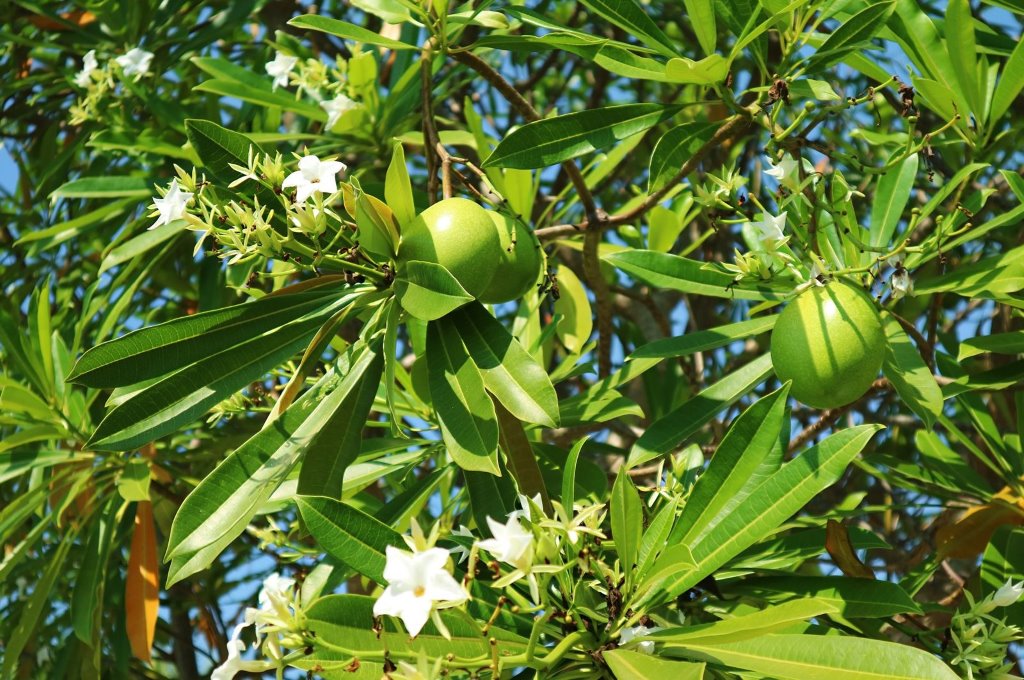
Cerbera odollam fruit and seed, commonly known as the suicide tree, a plant responsible for hundreds of documented poisonings in South Asia.
6. Brugmansia (commonly known as Angel’s Trumpets)
Brugmansia plants are instantly recognizable by their large, pendulous trumpet-shaped flowers that hang dramatically from branches. Native to tropical regions of South America, they are now cultivated worldwide in warm climates due to their striking appearance. Flower colors range from creamy white to yellow, pink, and deep orange.
Despite their beauty, all parts of the plant are highly toxic. Brugmansia contains tropane alkaloids such as scopolamine and atropine, substances that profoundly affect the nervous system. These compounds can induce intense hallucinations, confusion, memory loss, and loss of motor control. Unlike many other hallucinogenic plants, brugmansia’s effects are often accompanied by severe physical distress rather than pleasurable sensations.
There are documented medical cases of individuals experiencing extreme psychotic episodes after consuming brugmansia tea. One such case described a man who mutilated himself after ingesting a single cup. Scopolamine has also been misused criminally, particularly in parts of Latin America, where it has reportedly been blown into victims’ faces to render them compliant and unaware while being robbed.
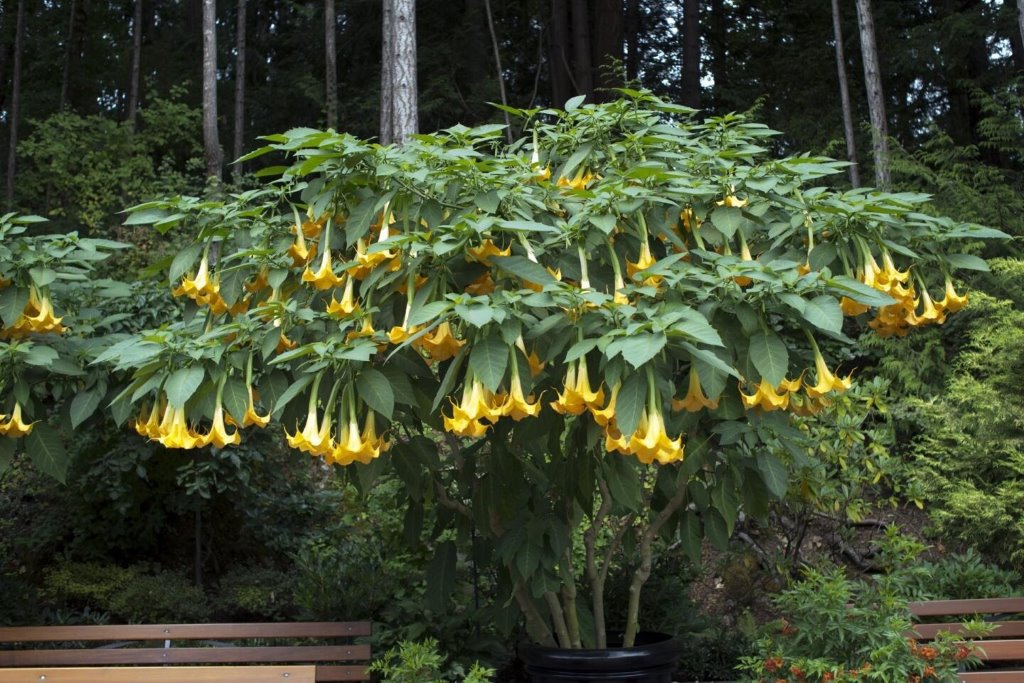
Brugmansia flowers in bloom, admired for their beauty but containing potent toxins capable of inducing delirium and severe self-harm.
5. Oleander (also known as the Jericho Rose)
Oleander is a flowering shrub native to parts of Asia but now widely grown across North America and other regions as an ornamental hedge. Its clusters of delicate flowers range from white to deep pink, making it a popular landscaping choice in warm climates.
This popularity is unsettling, considering that every part of the oleander plant contains deadly cardiac glycosides. These toxins disrupt the heart’s electrical system and can cause severe illness even with minimal exposure. In some cases, simply handling the plant and then touching the mouth or eyes has led to poisoning.
Ingesting oleander seeds or leaves can cause bloody diarrhoea, vomiting, excessive salivation, and irregular heartbeat. As poisoning progresses, neurological symptoms may appear, including drowsiness, muscle tremors, seizures, collapse, coma, and death. There have even been reports of people becoming ill after consuming honey produced by bees that visited oleander flowers.
Deaths from oleander poisoning are relatively uncommon, largely because the plant has an intensely bitter taste that discourages consumption. Still, its toxicity makes it one of the most dangerous ornamental plants in the world.

Oleander flowers and leaves, a widely cultivated ornamental plant that contains lethal heart-disrupting toxins in every part.
4. Manchineel (known as the Little Apple of Death)
The manchineel tree has a fearsome reputation throughout the Caribbean, Central America, South America, and parts of Florida. Often growing near beaches and coastal areas, it appears unremarkable at first glance. Its small green fruits resemble apples, earning it the ominous name “little apple of death.”
Nearly every part of the tree is toxic. The sap contains phorbol, a powerful irritant that causes severe blistering on contact with skin. During rainstorms, sap can mix with water and drip from leaves, making it dangerous to stand beneath the tree even briefly. The substance is so corrosive that it has been reported to strip paint from vehicles.
Burning manchineel wood is equally dangerous. The smoke can cause permanent blindness if inhaled. Indigenous Carib groups historically exploited the tree’s toxicity by coating arrow tips with its sap and poisoning enemy water supplies. Some accounts even describe victims being tied to the trunk as a form of prolonged torture.

Manchineel fruit growing on the tree, deceptively similar to edible apples yet capable of causing fatal poisoning.
3. Water Hemlock (also called Poison Parsnip)
Water hemlock is widely considered the most poisonous plant native to North America. Closely related to poison hemlock, the plant responsible for Socrates’ execution, water hemlock belongs to the carrot family and grows near streams, wetlands, and marshy areas.
Its resemblance to edible plants like parsnips and celery makes it especially dangerous. The plant contains cicutoxin, a potent neurotoxin found in all parts but most concentrated in the roots, particularly in early spring. Ingesting even a small amount can trigger violent seizures within minutes.
Additional symptoms include nausea, vomiting, abdominal pain, tremors, and confusion. Death often results from respiratory failure or fatal heart rhythm disturbances, sometimes occurring within hours of ingestion.
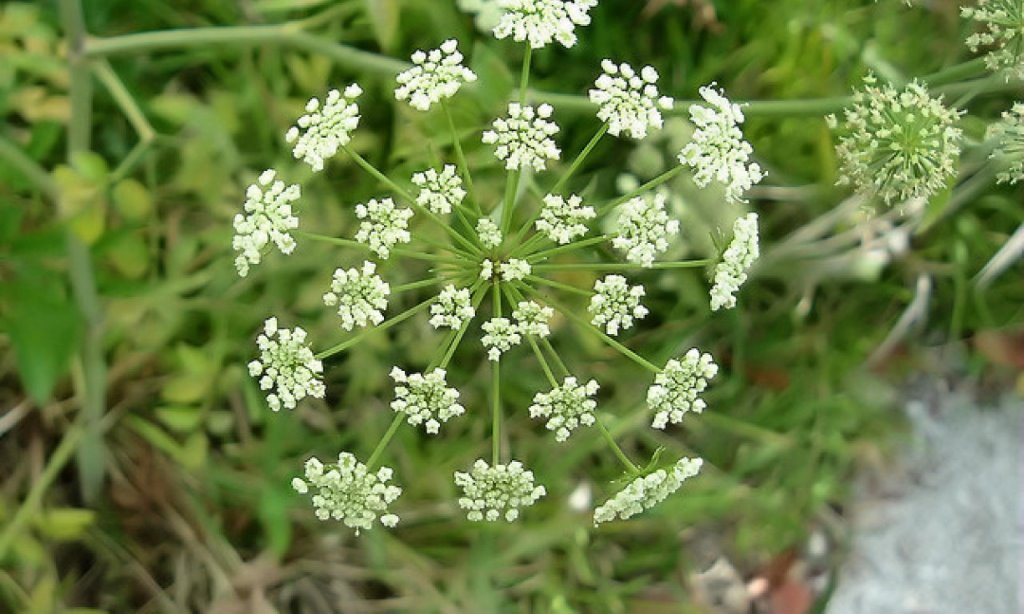
Water hemlock growing in the wild, a highly toxic plant often mistaken for edible members of the carrot family.
2. Castor Oil Plant
The castor oil plant is native to India, Eastern Africa, and the Mediterranean region, but it is now cultivated worldwide. While castor oil itself is commonly used in medicine and cosmetics, the plant it comes from is extraordinarily dangerous.
The seeds contain ricin, a toxin far more potent than cyanide, strychnine, and many snake venoms. Ricin disrupts protein synthesis at the cellular level, leading to widespread organ failure. Ingesting a single crushed seed can cause severe abdominal pain, bloody diarrhoea, and relentless vomiting over one to two days.
Once symptoms appear, recovery is unlikely. Death typically occurs due to dehydration and organ failure. Humans are particularly sensitive to ricin; it takes only one seed to kill an adult, while much larger quantities are required to kill other animals.
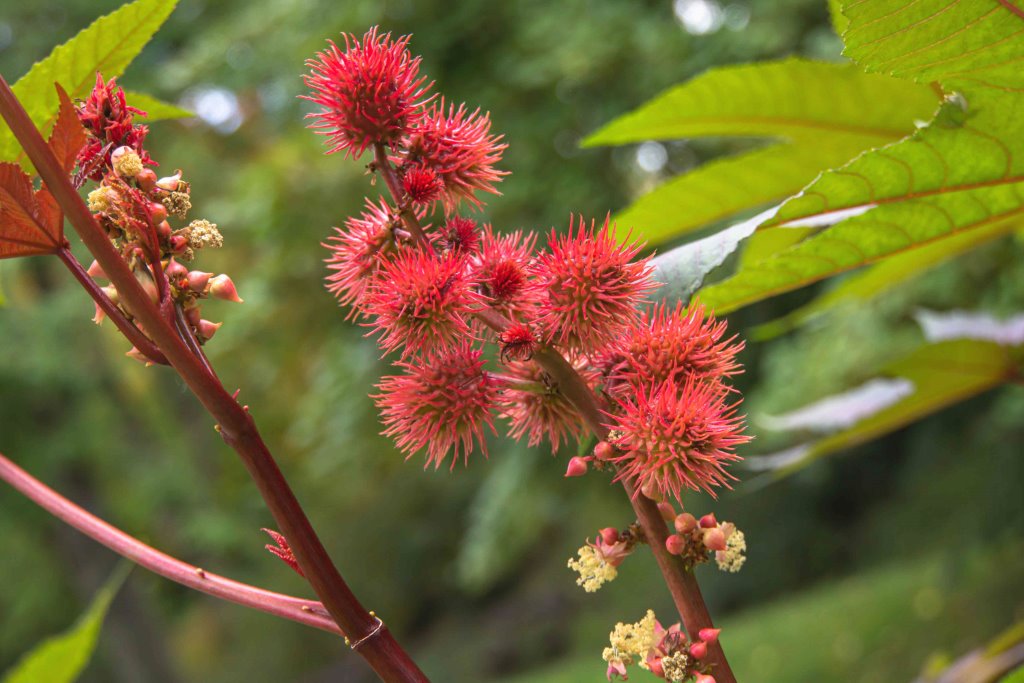
The castor oil plant, Ricinus communis, cultivated for oil yet containing one of the most dangerous plant toxins known.
1. Abrus Precatorius (commonly called Rosary Pea)
Abrus precatorius is a climbing plant native to Indonesia but now found throughout tropical and subtropical regions worldwide. It winds around shrubs, hedges, and trees, producing seeds that are visually striking: bright red with a single black spot.
These seeds contain abrin, a toxin approximately 75 times more powerful than ricin. While the hard outer shell can pass through the digestive system intact if swallowed whole, any damage to the seed—chewing, cracking, or drilling—releases the poison. As little as three micrograms can be fatal to an adult.
The seeds are often used in jewellery, rosaries, and decorative items, a practice that has led to tragic accidents. Several jewellery makers have died after pricking their fingers while drilling holes into the seeds, allowing abrin to enter the bloodstream directly.

Abrus precatorius seeds, commonly used in jewellery despite containing one of the most lethal plant toxins on Earth.
Plant poisonings are rare today thanks to modern medicine, rapid diagnosis, and emergency care. Still, these plants remain part of the natural world, growing quietly in fields, forests, and gardens. Knowing how to recognize them—and understanding the risks they carry—can mean the difference between curiosity and catastrophe.

